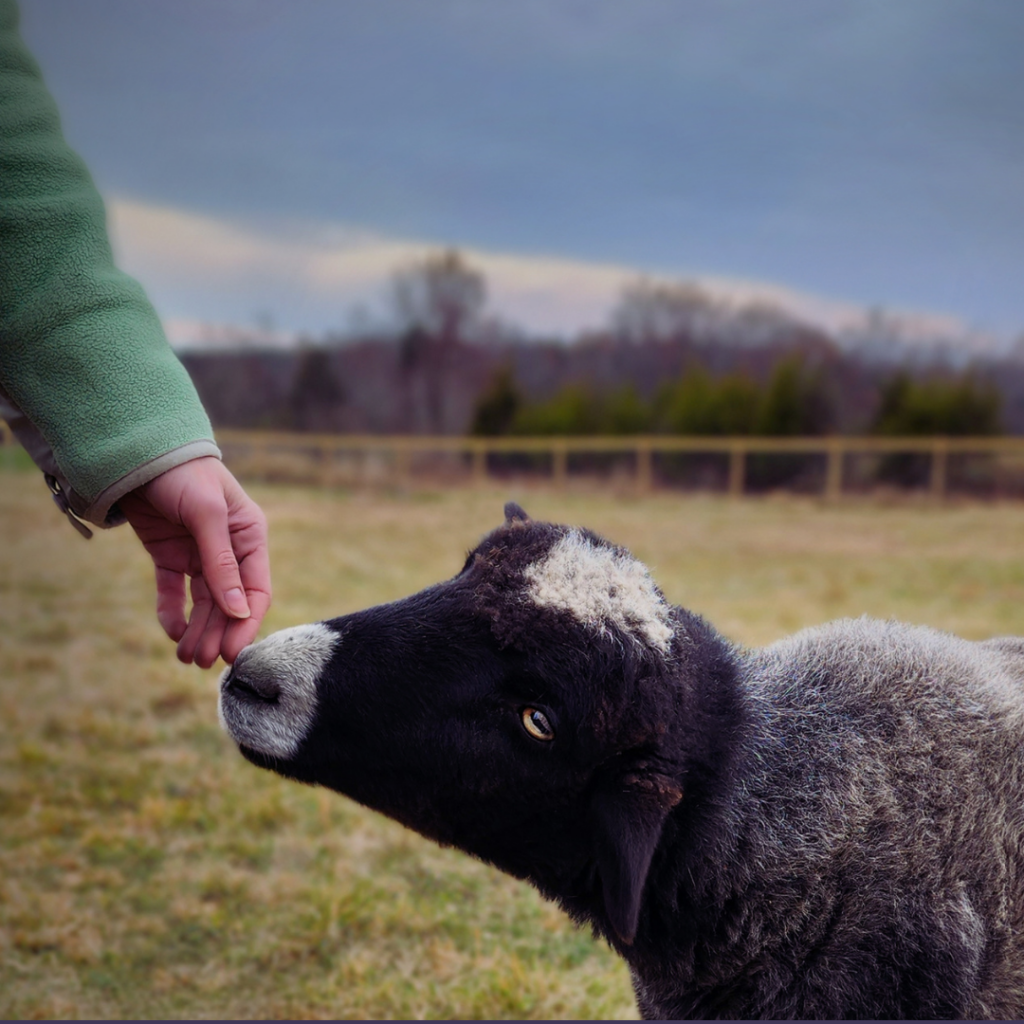
Resource Acknowledgement
The following resource was originally developed for The Open Sanctuary Project as part of Dr. Emily Tronetti’s dissertation project in pursuance of her Doctor of Education (EdD) through Antioch University and the Institute for Humane Education. Emily specializes in adult humane education and applied animal behavior, and is passionate about helping advocates and organizations cultivate compassionate coexistence through teaching about and supporting the agency and wellbeing of other animals. We are so grateful for her collaborative efforts and contributions to The Open Sanctuary Project.
This Resource is Part One of a Fully-Downloadable Guide!
This resource is the first part of a fully-downloadable guide that was originally developed as a comprehensive resource to help sanctuary educators foster and teach about farmed animalA species or specific breed of animal that is raised by humans for the use of their bodies or what comes from their bodies. agency and consent in the context of sanctuary education and outreachAn activity or campaign to share information with the public or a specific group. Typically used in reference to an organization’s efforts to share their mission.. In our efforts to make larger resources like the fully-downloadable guide as accessible as possible in various formats, we broke it down into six individual parts/resources. If you’re interested in reading the second part of the original resource, “A Guide to Fostering Farmed Animal Agency in Sanctuary Education: Part Two”, please click here. If you’d like to access the fully-downloadable guide, please click here.
Reflection Questions
Throughout this resource, you will notice questions in boxes like this. To get the most out of this guide, we encourage you to pause and reflect on each question and discuss them with your colleagues. To help with this, please click here for a list of the reflection questions and space for you to share your thoughts.
Imagine…
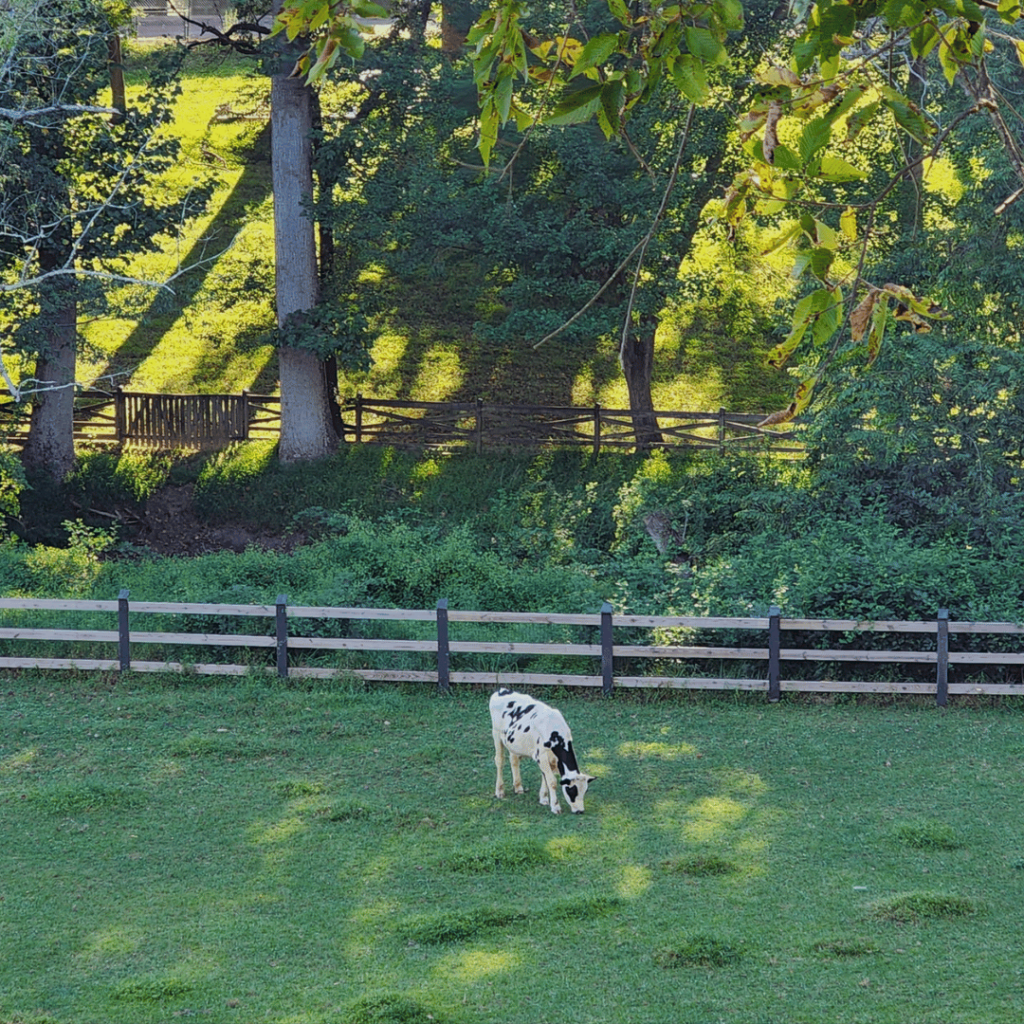
Imagine that it’s late morning on an early summer day, and you’re visiting a sanctuary you haven’t yet been to. You signed up for a guided visit, and it’s just about to get started. You and the other visitors are walking from the parking area to meet the sanctuary’s humane educator outside of the visitor center. Not far beyond the center, you see a green, rolling pasture with cowsWhile "cows" can be defined to refer exclusively to female cattle, at The Open Sanctuary Project we refer to domesticated cattle of all ages and sexes as "cows." grazing peacefully. You and the other visitors make it to the educator, forming a loose half-circle around her. She introduces herself as Sam. You listen closely as she tells the group about the sanctuary, although you occasionally find yourself getting lost in your admiration of the cows in the distance. Sam informs the group that the cows in the pasture ahead are who you’ll meet first. They’re one of two herds of cows who call this place home. Your group begins to approach their pasture, and you learn that these cows are the younger, more rambunctious cows at the sanctuary. Most of the cows lift their heads from their grazing, watching curiously as you and your group approach. Several of them, with little hops in their steps, begin to trot towards the fence. The humans make it to the fence line first, and Sam starts to introduce the various members of the herd. She lets the visitors know that you’re welcome to touch the cows who come and say hi. At that very moment, you lock eyes with a big white and black cowWhile "cow" can be defined to refer exclusively to female cattle, at The Open Sanctuary Project we refer to domesticated cattle of all ages and sexes as "cows." who’s headed your way. Sam informs you that that’s Billie.
Soon, Billie is right in front of you, lifting his huge head over the top fence railing to get closer to you. You begin to petAn animal who spends regular time with humans in their home and life for companionship or human pleasure. Typically a small subset of animal species are considered to be pets by the general public. his forehead and the top of his nose. He gently pushes his head into your hands, his eyes squinty and his ears hanging loose. You make your way to his cheek and then under his chin, and he lifts and stretches his head forward. You hit the spot! After a few more good scratches, you take your hand away and look towards the guide as she shares the cows’ stories. Your hand is resting on the railing when Billie begins to sniff it and then nudges it with the top of his nose. It seems as though he’s trying to tell you that he’d like more head scratches, and so you oblige. After a couple of blissful minutes of connecting with Billie, you sense that Sam, the sanctuary educator, is getting ready to move to the next location. You give your new friend a few more pats before stepping back from the fence to listen attentively to Sam. Billie pauses at the fence for a moment, watching you, before taking a few steps back and lowering his head back down to the grass to graze with his herd mates.
Reflection Questions
Check in with yourself. How are you feeling? What was this experience with Billie like? What did you learn from the interaction? How do you think the experience was for Billie? How do you know? Pause and reflect on these questions before continuing.
The sanctuary visit continues, and you meet a variety of other residents. As time passes, you notice the humidity rising and dark clouds rolling in. You’re almost to the last stop on your visit, where you’ll be meeting the “elder cows,” as Sam affectionately calls them. This is a much larger herd. It’s beginning to rain, and they’re all headed into their barn to stay dry. As your group makes it to the fence of their pasture, it rains harder. Sam decides to take you all into the cows’ barn to escape the rain. By the time you enter, many of the cows have settled into beds of straw while others remain standing. Sam tells the group to move carefully around the many cows to ensure they don’t get spooked. She then points out a few individual cows who are laying down that you can touch. You and the other visitors cautiously navigate around the cows’ massive bodies. You make your way to a brown cow, whose name you learn is Daisy. She’s lying by herself in a corner of the barn.
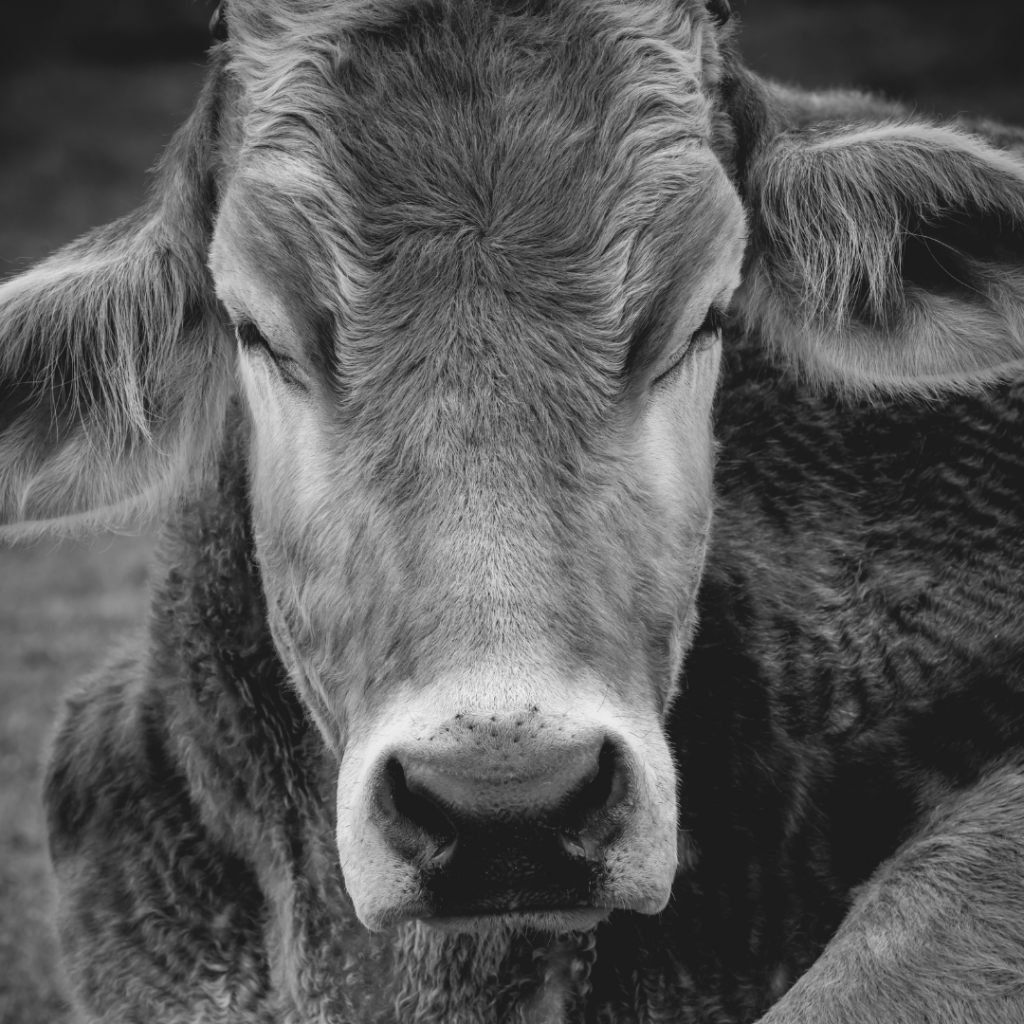
You approach Daisy, an older cow, from the side. She’s facing forward, but she definitely sees you coming. Daisy’s eyes, which had been softly closed, now begin to widen. You also notice the position of her ears change, shifting from loosely hanging down to tightly held up and back. She remains still as you reach out to touch her neck. Her skin slightly and briefly flinches as you make contact. She continues facing forward as you touch her, but you can see the whites of her eyes as she watches you closely. Remembering how Billie had requested more touch earlier, you decide to stop touching Daisy to see how she responds. Her face and ears appear to soften a bit, but otherwise, she’s fairly still. As you internally debate whether or not you should continue touching her, Sam informs your group that the rain is letting up and that you’ll be headed back to the visitor center. You impulsively decide to give Daisy another quick pat, and then you head out with the rest of the group.
Reflection Questions
Check in with yourself. How are you feeling? What was this experience with Daisy like? What did you learn from the interaction? How do you think the experience was for Daisy? How do you know? How did this interaction compare to the interaction you had with Billie? Take a moment to reflect on these questions before continuing.
As you continue reading this guide, please keep this exercise in mind. Carry the thoughts and feelings you have at this moment with you and notice if and how they evolve as you progress through this document.
The Purpose of this Guide
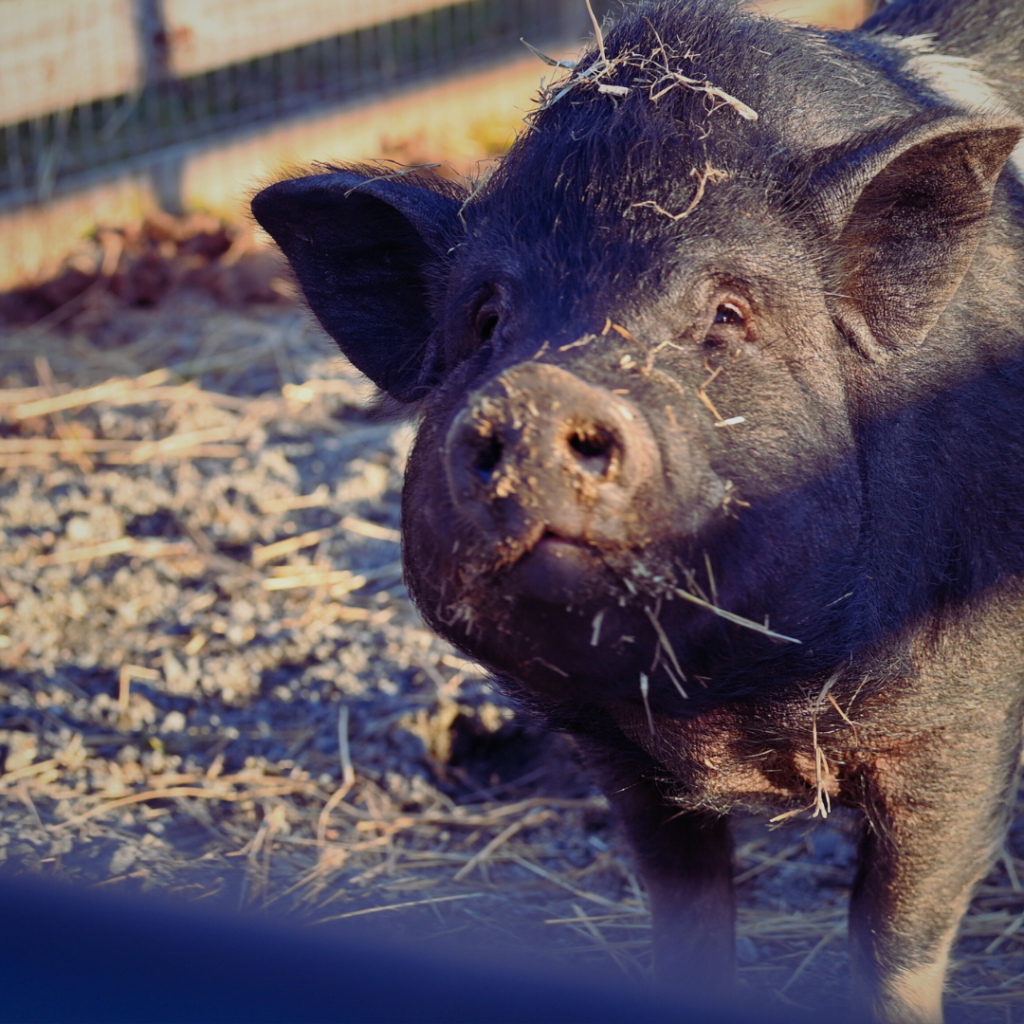
The “Imagine” exercise in the previous section asks you to imagine yourself as a sanctuary visitor. If you’re reading this, you very likely have been a sanctuary visitor in the past. Although, given the title of this guide, you’re probably here because you play another important part in a sanctuary setting: the sanctuary educator. As sanctuary educators, it can be helpful to remember what it’s like to be a visitor and to have this perspective inform our work. This is especially relevant in how we determine what an enjoyable, impactful experience is for visitors. However, the visitor experience is deeply intertwined with the experience of the residents, so it’s vital to consider their perspectives as well. How are the residents impacted by these interactions?
Many sanctuary educators are driven by the hope that connecting humans with individual farmed animalsA species or specific breed of animal that is raised by humans for the use of their bodies or what comes from their bodies. can lead to more systemic change and prevent more animals from suffering. While this personal and oftentimes organization-wide mission is important, there’s the potential that it may lead to situations that prioritize the visitor experience over that of the residents. This may take the form of non-consensual interactions between visitors and residents or other situations in which the residents’ agency is suppressed or denied.
Definition of Agency
Agency is the capacity of a living being to engage with their environments and to make choices for themselves based on their own preferences, needs, and desires. More on this in Part Two!
It’s critical to bring awareness to these possibilities and to question how they influence our educational objectives. If we’re potentially prioritizing the visitor experience, is this the most effective approach for countering the deeply ingrained, hierarchical ways of viewing and treating other animals? And what about the well-being of the individuals here, now, in front of us? This guide will explore these questions and more.
The purpose of this resource guide is to help sanctuary staff and volunteers recognize, support, and teach about the agency and well-being of farmed animals in the context of sanctuary education. This guide will define agency and what it looks like in farmed animals. It will also describe how to identify and respond to their consent. With these concepts in mind, we’ll discuss ways to center resident agency during education and outreach. Teaching other humans about how to support the agency of farmed animals is also important. This could impact how they interact with sanctuary residents as well as other beings in their homes and communities. This guide will contain some tips on how to teach about this topic effectively without compromising the well-being of the animals you advocate for. Finally, you’ll be left with some guiding questions for your reflection as you consider how best to foster farmed animal agency in your sanctuary education programs.
Resource Objectives
The objectives of this guide are for readers to come away…
- Knowing the importance of farmed animal agency and consent in sanctuary education
- Understanding how to identify consent (or lack thereof) and how to respond in educational contexts
- Questioning normative practices surrounding interactions between humans and farmed animals in the context of sanctuary education and beyond
- Understanding how to integrate agency-centered education into their work in support of resident well-being
Who This Guide is For
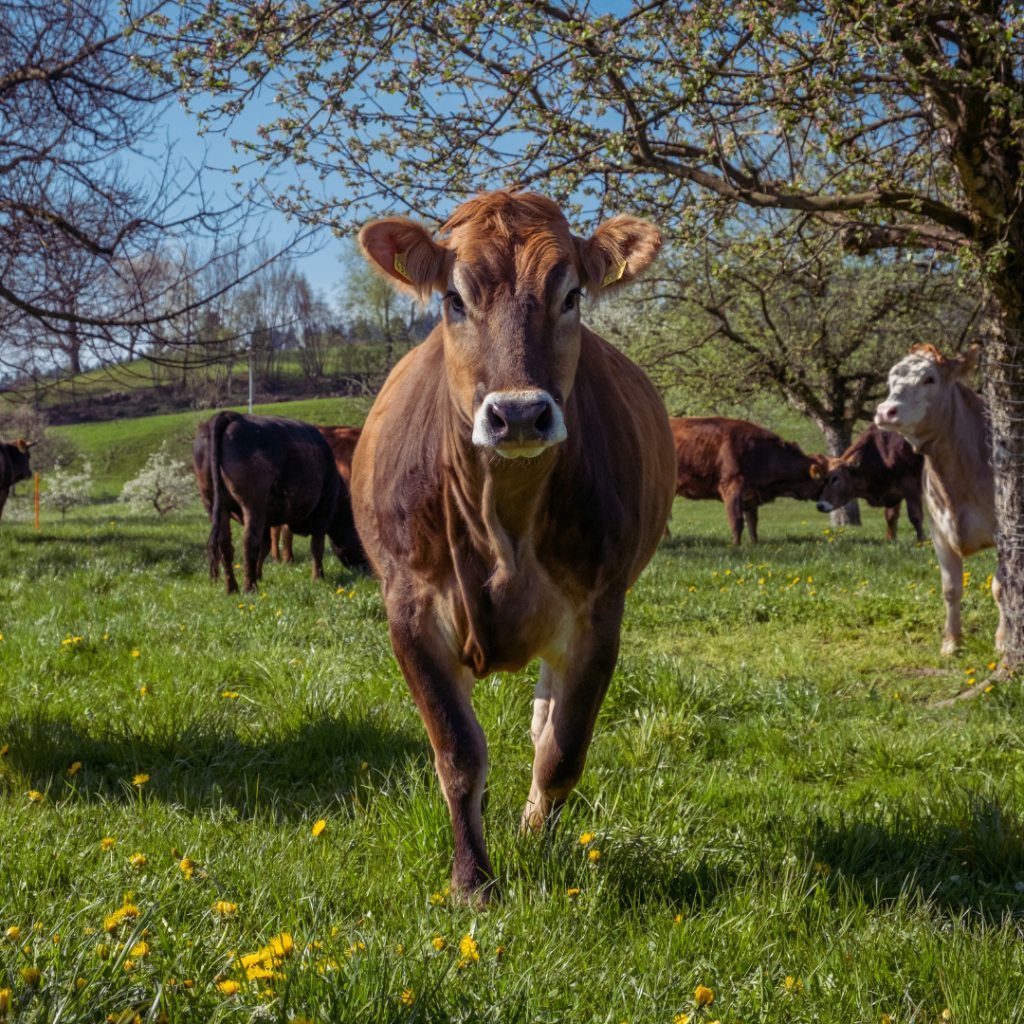
This guide is for sanctuary educators who are interested in maximizing the impact of their programs while maintaining the residents’ well-being as their top priority. While more research on the impact of sanctuary education is needed, many of us have experienced and witnessed the transformative learning that can occur in sanctuary. We have hope that sanctuaries can inspire both personal and societal change. To promote these transformations, sanctuary education can take a variety of forms, from more formal education programming like onsite visits to more informal education, such as how sanctuary staff and volunteers communicate with the public through their online presence.
While this guide is applicable to all forms of sanctuary education that involve farmed animals, it’s especially relevant to sanctuaries with visitor programs. Often referred to as “tours”, these are common in many sanctuaries and provide an opportunity for individuals to connect with and learn about farmed animals directly. Elan Abrell (2021) shared in his book Saving Animals: Multispecies Ecologies of Rescue and Care, “By investing time in basic visitor program elements, you will greatly increase the impact your sanctuary has. The more we educate the public, the quicker we can make the world better for farm animalsDomesticated animals that are used by humans either for their body or what comes from their body. Farmed animals have fewer regulations governing their welfare than other species in many countries.” (p. 127).
This sentiment was reflected in recent research published by Faunalytics that found folks who meet formerly farmed animals at sanctuaries are more likely to change their attitudes and behaviors towards farmed animals (Beggs & Anderson, 2020). A significant percentage of the study’s participants more fully realized the connection between food choices and animal suffering during their sanctuary visit, and many were inspired to decrease their consumption of animal productsAnything that originates from an animal’s body, including things like their eggs, feathers, flesh, honey, milk, and wool.. Participants also shared that the most memorable and impactful moments when visiting an animal sanctuary were those spent directly interacting with the residents (Beggs & Anderson, 2020). While more research on this topic is necessary, it’s important to take these findings into account. However, it’s also vital to consider the variety of ways visitor programs can impact the residents. For example, farmed animals have often experienced trauma and have spent their life prior to sanctuary enduring exploitationExploitation is characterized by the abuse of a position of physical, psychological, emotional, social, or economic vulnerability to obtain agreement from someone (e.g., humans and nonhuman animals) or something (e.g, land and water) that is unable to reasonably refuse an offer or demand. It is also characterized by excessive self gain at the expense of something or someone else’s labor, well-being, and/or existence.. Inviting visitors to the sanctuary may cause these animals stress, and anything that may negatively affect the well-being of the residents calls for thoughtful consideration.
Sanctuary Education Program Options
If you’re interested in learning more about the different forms that sanctuary education can take, please check out these resources: “In-Person Sanctuary Educational Programming: What Are Your Options?” and “Virtual Sanctuary Educational Programming: What Are Your Options?”.
Reflection Questions
What does education look like in your sanctuary? Does your sanctuary have a visitor program?
Why or why not?
Our approaches to education and outreach may have various implications and impacts, and it’s crucial to reflect on these. While we would never intend to cause harmThe infliction of mental, emotional, and/or physical pain, suffering, or loss. Harm can occur intentionally or unintentionally and directly or indirectly. Someone can intentionally cause direct harm (e.g., punitively cutting a sheep's skin while shearing them) or unintentionally cause direct harm (e.g., your hand slips while shearing a sheep, causing an accidental wound on their skin). Likewise, someone can intentionally cause indirect harm (e.g., selling socks made from a sanctuary resident's wool and encouraging folks who purchase them to buy more products made from the wool of farmed sheep) or unintentionally cause indirect harm (e.g., selling socks made from a sanctuary resident's wool, which inadvertently perpetuates the idea that it is ok to commodify sheep for their wool)., some forms of harm can be quite easy to miss, such as the psychological harm caused by the denial or suppression of resident agency. The risk of causing such harm is sometimes exacerbated by the urgency to create change, the pressure to fundraise, compassion fatigue, and more. When these factors are present, they may begin to overshadow the needs and preferences of current residents during sanctuary education. Education and outreach endeavors that don’t prioritize resident agency risk contradicting our educational objectives and, ultimately, our mission, vision, and values.
For example, getting to hug a cow might inspire someone to rethink their consumption of beef and dairy. But if we’re not considering what the experience of being hugged is like for that individual cow, what hidden messages are we sending? If we don’t give that animal a say in whether or not they’re hugged, could we still be perpetuating the idea that humans have power over other species and that our interests are always more important? If sanctuaries center resident agency, could we contribute to even more profound transformations in how humans think about and treat other beings, even beyond the sanctuary? This guide is intended for folks who’d like to think critically about these questions and more to discover what educational approaches work best for you, your sanctuary, and, most importantly, the residents.
To help you determine if this guide is for you, consider these reflection questions:
- What are your sanctuary’s mission, vision, and values?
- Is education a part of your missionThe stated goals and activities of an organization. An animal sanctuary’s mission is commonly focused on objectives such as animal rescue and public advocacy.? If so, what are your educational objectives, goals, and outcomes? Do your programs and other approaches to education align with these goals? With the mission, vision, and values?
- Who is benefitting from your educational programming? Is there anyone who could potentially be negatively impacted or harmed by it? Is there anyone whose perspective is being left out of it altogether?
Interested in Learning More?
Interested in learning more about fostering farmed animal agency and consent in sanctuary education? Please click here to read the second part of this guide!
We’d Love to Hear from You!
This guide is a living document that we plan to make continual changes to as we get feedback from sanctuary staff and volunteers who have implemented what they’ve learned from this guide into their sanctuary education practices. In our efforts to ensure this guide is as helpful as possible to sanctuary staff, volunteers, visitors, supporters, and, most importantly, the residents, we’d love to hear how this guide has impacted your work. If you have feedback, please contact us here!
Sources
A Guide to Fostering Farmed Animal Agency in Sanctuary Education | The Open Sanctuary Project
The Significance of Humane Education in a Sanctuary Setting | The Open Sanctuary Project
In-Person Sanctuary Educational Programming: What Are Your Options? | The Open Sanctuary Project
Fundamentals of an Effective Animal Sanctuary Tour Program | The Open Sanctuary Project
Virtual Sanctuary Educational Programming: What Are Your Options? | The Open Sanctuary Project
How to Develop a Fundraising Plan for Your Animal Sanctuary | The Open Sanctuary Project
Recognizing and Managing Compassion Fatigue at Your Animal Sanctuary | The Open Sanctuary Project
Fostering Critical Thinking at Your Animal Sanctuary | The Open Sanctuary Project
Strategic Planning for Educational Programming at Your Animal Sanctuary | The Open Sanctuary Project
Saving Animals: Multispecies Ecologies of Rescue and Care | Elan Abrell
A Farm Sanctuary Tour’s Effects on Intentions and Diet Change | Tom Beggs and Jo Anderson








